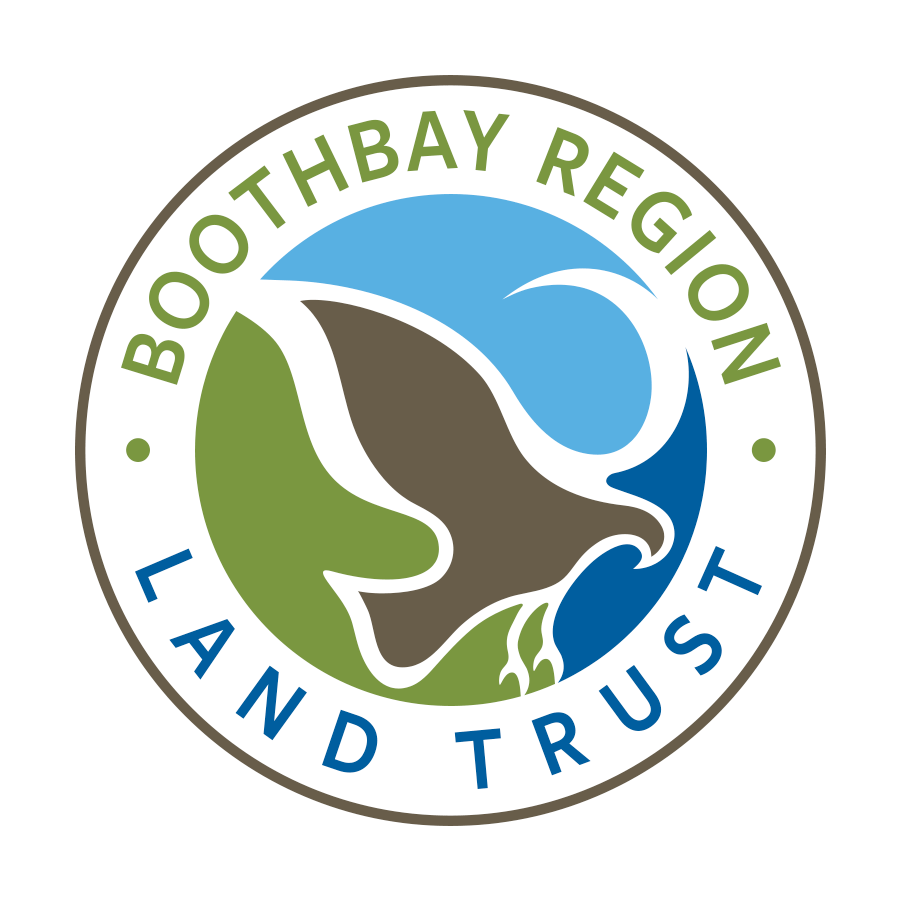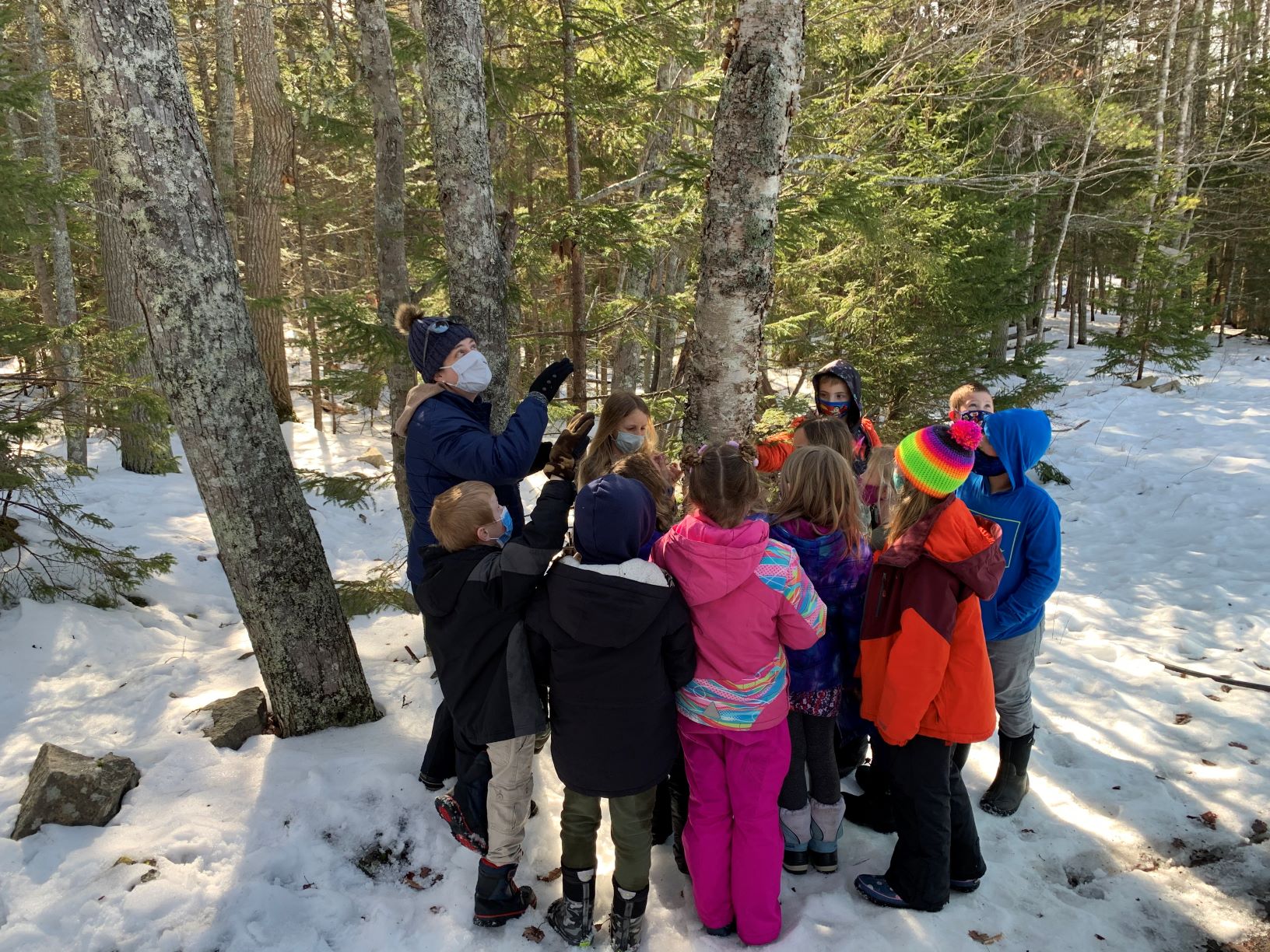March 2: Children and Trees

Students examine the bark of a paper birch.
I was recently invited to Southport Central School to take the 2nd/3rd graders on a hike that focused on trees. They had read about our self-guided winter tree identification walk in the newspaper and were hoping to visit Cross River Preserve. Alas our winter weather left the preserve parking lot in less than ideal conditions for a school bus to drive in, so we opted to take the students outside of their own school doors instead. In the 1/4 mile stretch of trail behind the school, we were able to find six species of trees: Paper Birch, Red Maple, Bigtooth Aspen, White Pine, Red Spruce, and Balsam Fir.

Students enjoy standing among tiny red spruce trees.
While leaning against tree trunks or running our fingers over needles, we discussed the difference between deciduous and coniferous trees and the characteristics we use for identification. We compared bark textures and patterns in young and old trees of the same species, and gazed high into a maple tree to spot its red buds glowing in the sunlight. The kids jumped right in, breaking apart needles to smell and then taste them, noticing that different species of needles have different flavors. As we hiked they pointed out examples of the trees by name, remembering that our firs are friendly and soft to the touch and our spruces are spiky and sharp.

Learning some identification tricks for the white pine tree.
It was a magical afternoon in the forest as the children interacted with the trees around them. Our time in the woods led to other discoveries, like a thicket of young pine that was home to some snowshoe rabbits. Some students noticed a variety tracks and scat and pointed them out to the group. As we neared the school others discovered a dead standing tree, and noticed the signs that insects and woodpeckers had been there. As our walk ended, I encouraged the children to continue to look at the trees, as continued observation and practice will improve their ability to identify trees.
What trees are you seeing each day? Take some time to look around and interact with the trees with the fascination of a child and you might just learn something new. Keep an eye on the BRLT calendar of events for more programming on trees and other natural topics. We hope to see you at a future event!




